|
Volcanoes
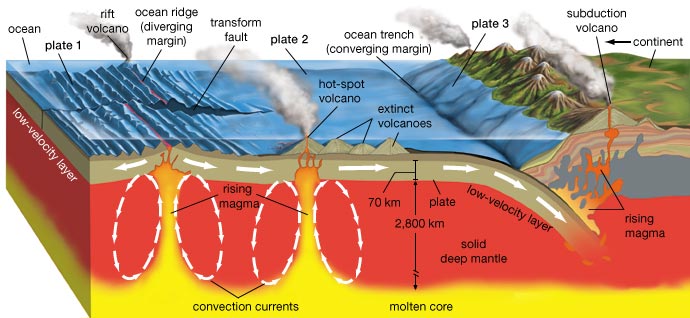
Volcanoes are commonly found along mid-ocean ridges. Basalt magma rises up from the asthenosphere and new oceanic crust is
formed.Volcanoes are also found along subduction zones where they form volcanic arcs. Magma is produced above the subducted
plate, it is less dense than the surrounding rock so it rises towards the surface. "geoscientists first thought that
magma was produced as rock near the top of the down going plate and was heated by friction, but they are now convinced that
the melting is for a different reason." Melting at subduction zones goes as follows:
Hot Spots
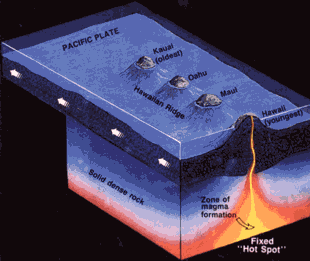
Hot spots originate at the boundary line between the mantle and the outer core. they consist of narrow plumes of extremely
hot mantle material. The plumes rise up through the mantle, and then melt the rock at the base of the lithosphere. This creates
magma, and this magma then rises to the surface, creating hot spots.
Hot spots & Continents
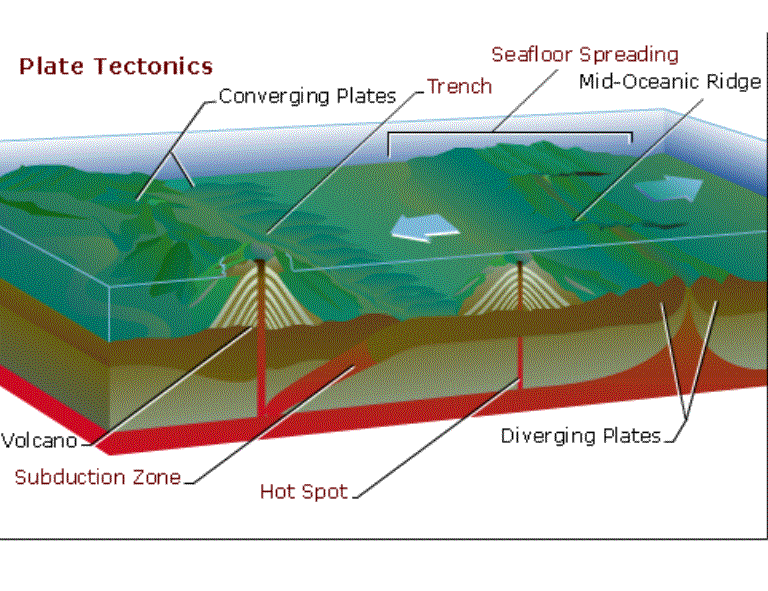
There are some hot spots under continents. A hot spot under the continent is what causes the hot springs of Yellowstone National
Park. There is one theory that suggests that the bulge made by a hot spot may cause the rifting of a continent. There is evidence
suggesting a hot spot is responsible for the Rift Valley in Africa. Evidence also suggests that the New Material Fault may
be an aborted rift zone created by several hot spots.
Mountains at Plate Boundaries
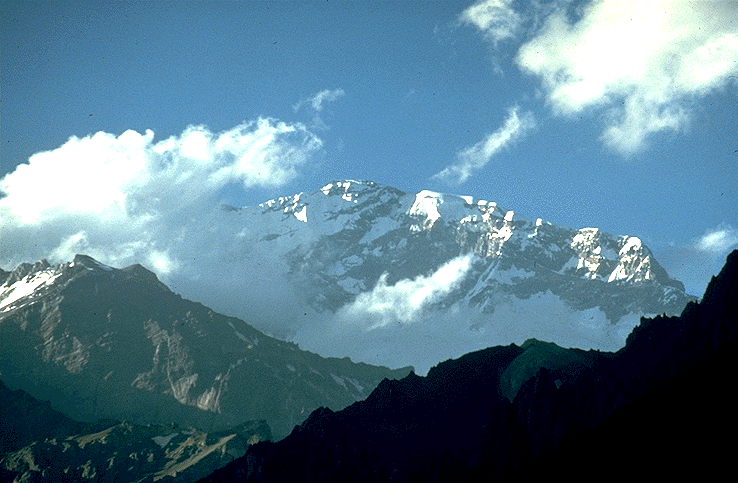
Most great mountain ranges are located near convergent plate boundaries. Mountain ranges are formed in two ways. Magma is
generated above the subducted zone. Most of the magma remains below, cooling to form large underground masses of igneous rock
known as batholiths. This combination of batholiths and volcanoes adds much more rock above the subduction zone, and makes
the land elevation much higher. Many subduction zones go through compression when two plates are pushed together. This causes
large masses of rocks to be pushed and stacked on top of each other. This forms high mountains.
Oceanic Trenches
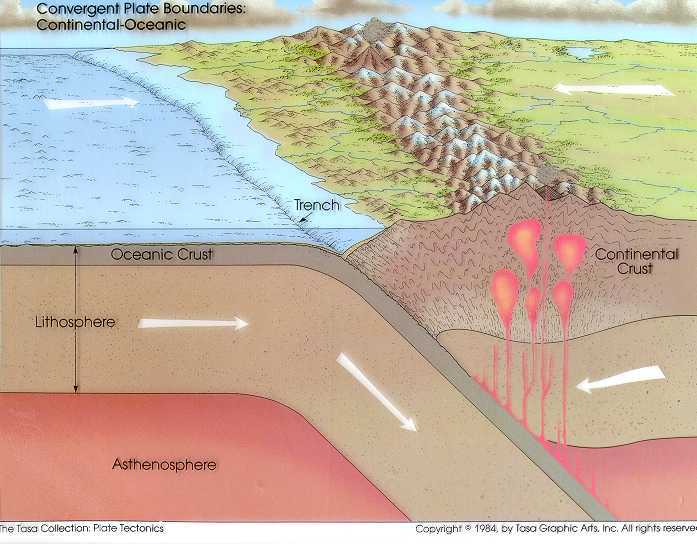
Earth's deepest valleys reside in the ocean. Oceanic plates are bent downward as they enter the subduction zone, as they
are being subducted under another plate. here a valley is formed above the zone of the bending known as a trench. These
trenches are wide, with side slopes that are not steep. On world maps trenches are shown with the darkest blue shading,
making them easy to find. There are many trenches in the western Pacific, where ocean-ocean subduction occurs. And there is
a trench along the western coast of South America, due to the Nazca Plate being subducted underneath the continent.
Growth of Continents at Subduction Zones
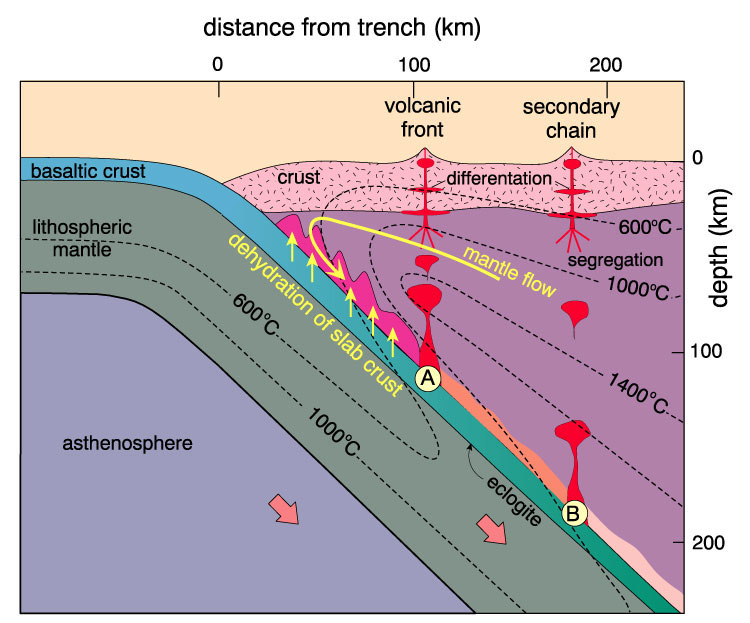
Oceanic sediment is deposited on top of an oceanic plate during it's travels from a mid-ocean ridge to a subduction zone.
This material then becomes rock as it is heated and put under pressure. This causes it to then become a solid part of the
other plate. When material is added like this, it causes the continent to become larger at its edge. Continents can
also become larger when igneous rock and batholiths are added to it above the subduction zone. this is known as continental
accretion.
Plate Tectonics & Earthquakes
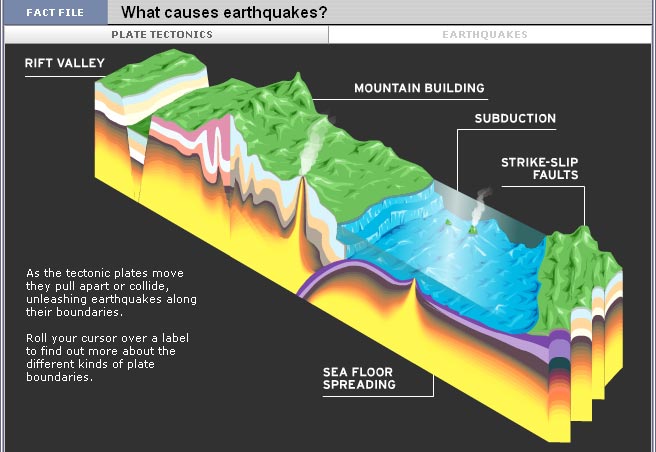
Earthquakes can be caused due to plates not sliding smoothly past one another. Sometimes they hold together for an extended
amount of time, and then break apart suddenly. Earthquakes are a common occurrence due to the movement along the transform
faults connecting segments of the ridge crest. The transform faults on or close to land are the ones that will most likely
cause the most dangerous earthquakes. The Earthquakes that at continent-continent collision zones are the most common on Earth
making them the most hazardous. Earthquakes that happen in subduction zones at very shallow or very deep depths along the
subducted plate.
|

